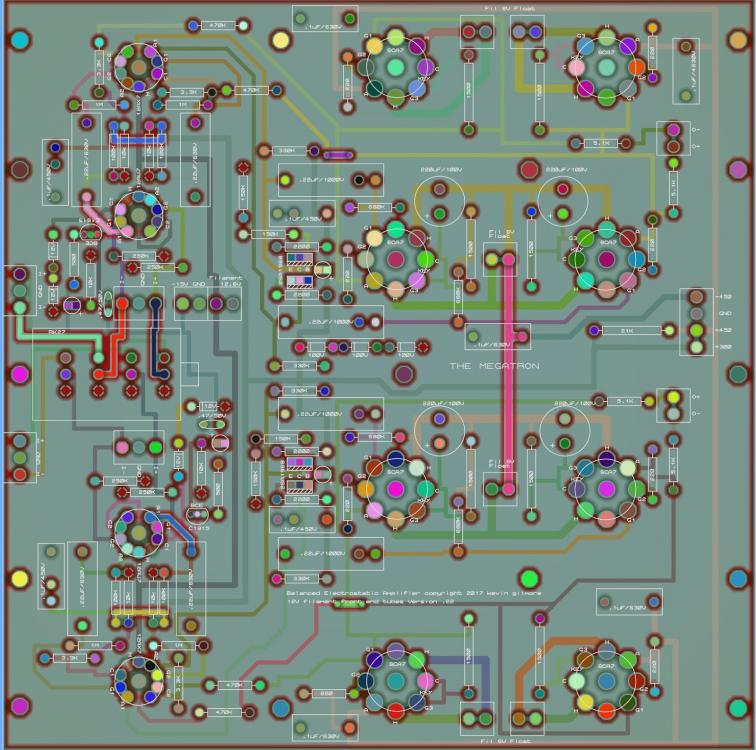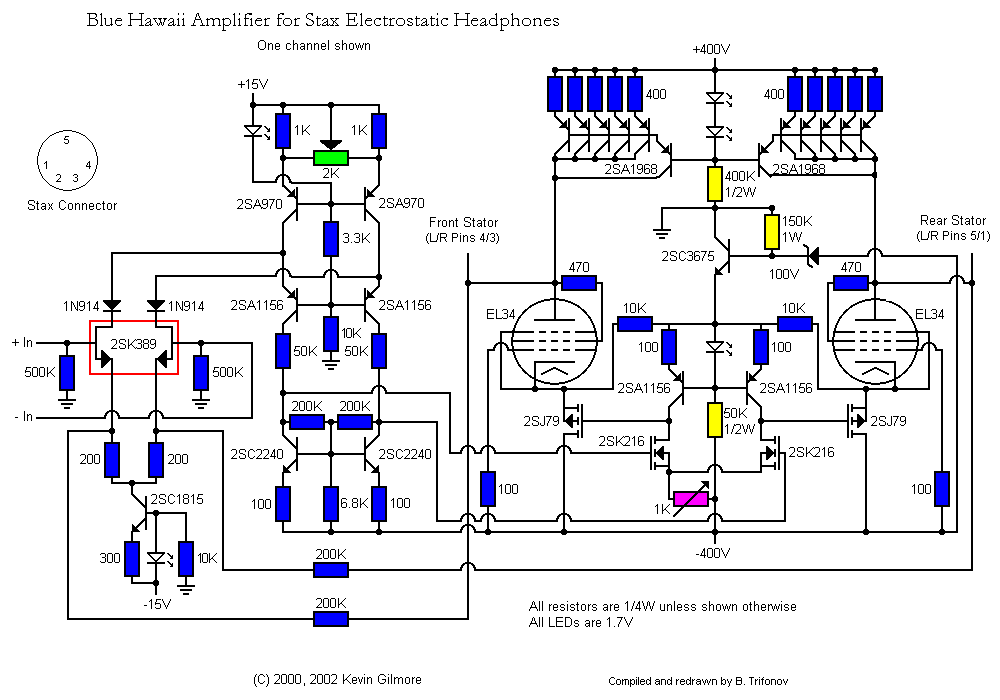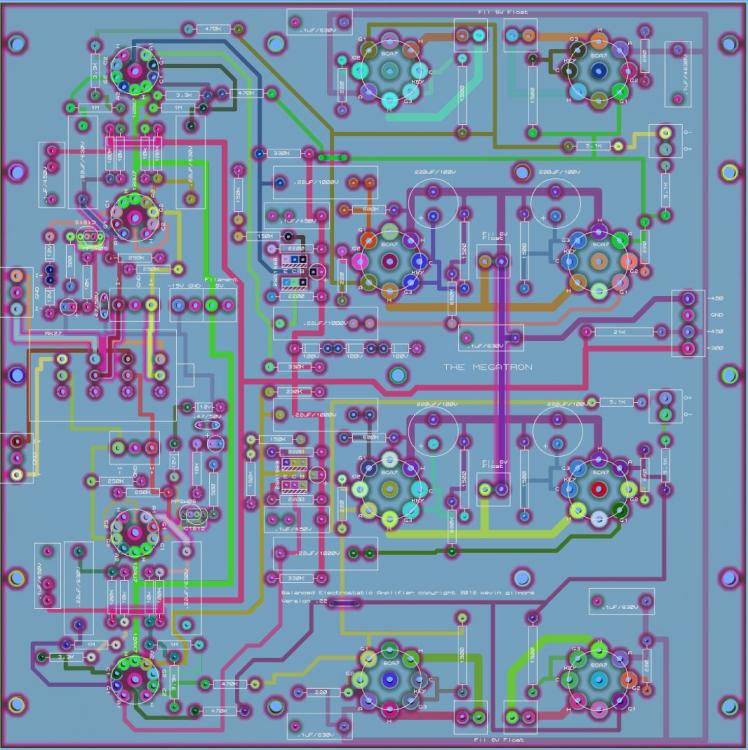-
Posts
1,376 -
Joined
-
Last visited
-
Days Won
1
Content Type
Profiles
Forums
Events
Everything posted by mwl168
-
Intersting. Audeze lists LCD 2 as having 70 ohm impedance on their web site which is twice as high as what the measurement says.
-
Either the split or dual GRHV boards is fine with me. But best to have one version made instead of two - the number of boards effects the cost greatly as is the case always. If people can respond with their interest here we can start to shape the plan.
-
You got me thinking if my impression of the Focals were "skewed" by the gears I listened to them with. They were driven straight from a DAC which "supposedly" can also drive headphones. My experience with the LCD2 echoes what you said about the Utopia. In my experience, the LCD2 needs an amp with low output impedance and can deliver plenty of current into a lowish load to make it perform. Given the LCD2 is rated at about the same impedance as is the Utopia, they probably exhibit the same demand on the amps.
-
Yes, I am planning for a two-box build for the Megatron for the reasons you stated. it would need to be a huge chassis for a single-box Megatron with the large amp board, power supply and all the transformers. Unlike the HV Carbon, BH and Grounded Grid, I expect the GRHV will run much hotter for the Megatron with all the tubes it needs to power. So yes, external heatsink for the GRHV for sure. I have most of the layout done in my mental execution But I have one snag I have not figured out - how to get the AC main supply to the two filament transformers for the CCS tubes that need to be mounted in the amp chassis. I love to hear people's ideas.
-
Yes, one amp board for both channels for Megatron. The PS is a bit of a dilemma. The old Megatron PS is based on the KGSSHV PS, quite big and not as accurate and low noise as the GRHV. I have been exchanging PMs with a few knowledgeable headcasers in the last few days. With Kevin's recent modification to run 12.6VDC for front end filament supply (Thanks Kevin!) this is what I plan to do personally: I will run my Megatron with a GRHV PS. I will use 7812 and 7912 regulators on the LV section on the GRHV board. The 7912 will provide the -12VDC for the front end current sink and the 7812 will provide 12VDC for the front end filament supply. I will mount the 7812 (which need to drop about 3VDC and pass 600mA) under the PCB and bolted to the chassis below to provide proper heatsinking. I will use a drop resistor to get the 300VDC from the 450VDC supply. I can include the GRHV PS board in the GB if people are interested.
-
Reminded me of my experience long time ago trying to buy a Kawai piano. They have a "territorial" system in US that does not allow one region to sell brand new piano to customers from another region which enables my local dealer to charge outrageous price which is more than 20% higher than what I could buy the same piano for from another dealer. I called the Kawai headquarter in US and asked them how this policy benefits their customers. After putting me on hold for about 10 minutes, the rep came back and told me they have no good explanation. I went and bought a different brand piano.
-
-
That's correct. You either use the STN9360 or the KSA1156 but not both. I believe both are current production parts available from Mouser. I agree that SMT is taking over. I wonder how much longer through-hole components will continue to be made?
-
some build notes: · The 360R KSA1156 emitter resistors set the current to the 3rd stage. The original BH ran 10mA, the 360R resistors in current version set it to be about 3mA to reduce heat. If you decide to raise the current, make sure you compensate for it by lower initial value in offset adjustment. · The boards are designed T2 style – the tubes are mounted on the back side of the board. I also mounted the LED, all trim pots and the 50R CCS resistors on the back side for ease of diagnosis and adjustment. · Be VERY CAREFUL when you measure the voltage across the 50R CCA resistor next to the 24V zener. There is significant voltage potential difference between the two and they can get arcy sparky easily – it happened to me twice when I was testing/adjusting the CCS current - big bang, magic smoke and flying silicon pieces. I ended up mounting those 50R resistors tall to give additional Clarence. · Also be careful with the DN2540 in the CCS, their exposed tabs are live. · It should be obvious but the PZTA06 and PZTA56 SMD are to be mounted vertically observing the pinout.
-
Thanks Kevin!
-
I don't have a complete updated schematic but the hand-draw images below are the changes I traced on the updated Blue Hawaii. IIRC, the rest of the circuit is the same as the original one (the color image). I built the 2SK216/2SJ79 version so replace the 2SJ79 in the drawing with KSA1220 KSC2690 . The KSA1156 emitter resistors determine the current to the third stage and the current is reduced in this version. I will add some notes from my own build later.
-
Looking at the latest Megatron Gerber file I downloaded and used in my 2nd post here, the front end 12AU7/12AX7 also uses 6.3V filament. I do remember reading on the Megatron thread that 12.6V filament can be used but will involve modification of the board. Hi Kevin: Can you confirm if my observations below (from the Gerber) are correct? 1. The CCS EL34 tubes are the four EL34 on the outside edge of the board, each of these EL34 needs its separate filament winding and the filament supply wires need to be very short so the transformers pretty much need to sit right next to or below the board. 2. The output EL34 tubes are the ones in the center, two for each channel and can share one filament winding for each channel. 3. All the EL34 filament supplies need to be floated.
-
Am I the only person still dissapointed with the sound of the cars?
-
I started this interest probe with only the Megatron amp board in mind but I am open to include the PSU board as well. Kevin layout a "universal PSU" for Megatron longtime ago. I am not sure if that's the one people like to use. For me personally I have been thinking if I can use the GRHV with some revision to power the Megatron. We need +/-450VDC, +300VDC (can be derived from the +450VDC supply with a drop resistor), -15VDC plus 3 sets of filament supplies - one set for the front end (12AU7 and 12AX7) which Birgir recommended using DC supply, one set for the 4 output EL34 and another set for the CCS EL34 which needs to be very close to the tubes. What are people's thoughts?
-
I checked with Kevin and in this position it only runs at 300V so KSA1156 should work. STN9360 should work too but will need to be mounted vertically and observe the pinout difference.
-
-
Someone, who will remain unnamed here, got me interested in building a Megatron I got quotes back from the fab houses. If we can get 10 sets we can get the cost per board down to just under $40 USD (plus shipping from me to the participant). The PCB is 228mm x 228mm and will be 2mm thick with 4oz copper. I did some research and the only obsolete/hard-to-get part is the 4 2SA1968 which Kevin confirmed can be replace with KSA1156 mounted backwards. The board also uses 2 2SC1815 or MPSW06. I have a stack of the 2SC1815 so I am happy to supply them to the GB participants that need them (no cost). Please respond here if you are interested. Thanks!
-
Megatron Electrostatic Headphone Amplifier
mwl168 replied to kevin gilmore's topic in Do It Yourself
Thanks! -
Megatron Electrostatic Headphone Amplifier
mwl168 replied to kevin gilmore's topic in Do It Yourself
According to the Gerber viewer I used, the Megatron board dimension is 228.6mm x 228.6mm. Can someone confirm? Thanks! -
As an alternative, I've been getting my wires for high-voltage use here: http://www.apexjr.com/wire.html Unless my calculation is off, the cost is no higher than the navships offerings on eBay.
-
The regulated output voltage is: for V+: ((R8 + R7) / R7) x 10 (reference voltage of D5 - LT1021-10) for V-: ((R9 + R10) / R10) x 10 (reference voltage of D7 - LT1021-10) On the goldenreference4 board silkscreen, R7, R8, R9 R10 are all 1.5K. R7 and R8 are connected and R9 and R10 are connected. R8 and R9 are the 1.5K resistors closer to the DN2540 on each side of the board.
-
Can you post a close up photo of the negative side?
-
Agreed! I did not pay attention to the sound stage when I auditioned the Focal's and I have no familiarity with HD800 other than a very brief listening in an uncontrolled environment. Going by memory the HD800 is also a more comfortable headphone than the Focal's. The Utopia, if priced at $2000 US, would have been a no-brainer for me.
-
Got to listen to both the Utopia and Elear while I was in SF last week. Unfortunately I was under the weather and was listening to these headphones through totally unfamiliar upstream gears in a somewhat noisy setting, blah, blah, blah. Anyway, take this impression with a large grain of salt. Both headphones are very well made and comfortable to wear. They are definitely on the heavier side but not quite as bad as the Audeze's. The bulkiness of the cable that many complaint about actually did not bother me that much. I do wish they have come with balanced connection option though. To establish somewhat of a baseline, I also listened to the store's Audeze LCD 2. I am familiar with the sound of Senn HD650, Audeze LCD 2, Stax 007 and 009 (both later versions). To my ears the Elear's sound reminds me of the LCD 2 while the Utopia reminds me of the 009. They (Utoipa and Elear) have different sound signature - similar to what I think of the 007 and 009. I don't necessarily think of the Utopia as the upgrade from the Elear. The Utopia has better resolution and is more neutral yet brighter sounding to me. I do like the Utopia better overall but not sure I can justify the $3000 difference in price. Compare to other $1000 headphones I know of, the Elear is a very strong contender. Now if the Utopia is a $2500 USD headphone then we'll really be talking... Just my 2 cents worth...







